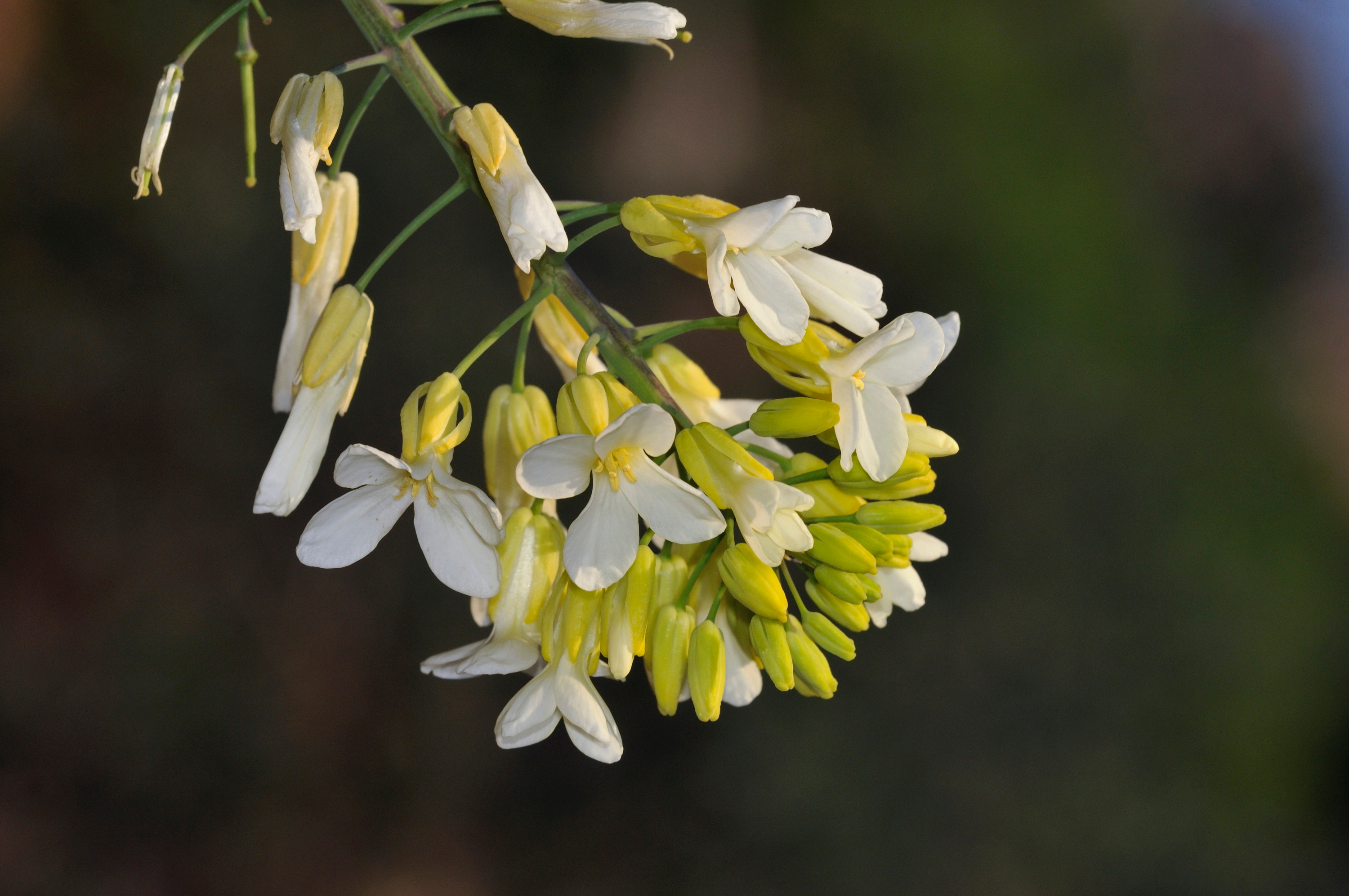Mustard
(Brassica cretica)

Description
Brassicaceae is a medium-sized and economically important family of flowering plants commonly known as the mustards, the crucifers, or the cabbage family. Most are herbaceous plants, some shrubs, with simple, although sometimes deeply incised, alternatingly set leaves without stipules or in leaf rosettes, with terminal inflorescences without bracts, containing flowers with four free sepals, four free alternating petals, two short and four longer free stamens, and a fruit with seeds in rows, divided by a thin wall (or septum). The family contains 372 genera and 4,060 accepted species.The largest genera are Draba (440 species), Erysimum (261 species), Lepidium (234 species), Cardamine (233 species), and Alyssum (207 species). The family contains the cruciferous vegetables, including species such as Brassica oleracea (e.g. broccoli, cabbage, cauliflower, kale, collards), Brassica rapa (turnip, Chinese cabbage, etc.), Brassica napus (rapeseed, etc.), Raphanus sativus (common radish), Armoracia rusticana (horseradish), but also a cut-flower Matthiola (stock) and the model organism Arabidopsis thaliana (thale cress). Pieris rapae and other butterflies of the family Pieridae are some of the best-known pests of Brassicaceae species planted as commercial crops. Trichoplusia ni (cabbage looper) moth is also becoming increasingly problematic for crucifers due to its resistance to commonly used pest control methods.Some rarer Pieris butterflies, such as Pieris virginiensis, depend upon native mustards for their survival, in their native habitats. Some non-native mustards, such as garlic mustard, Alliaria petiolata, an extremely invasive species in the United States, can be toxic to their larvae. Species belonging to the Brassicaceae are mostly annual, biennial, or perennial herbaceous plants, some are dwarf shrubs or shrubs, and very few vines. Although generally terrestrial, a few species such as water awlwort live submerged in fresh water. They may have a taproot or a sometimes woody caudex that may have few or many branches, some have thin or tuberous rhizomes, or rarely develop runners. Few species have multi-cellular glands. Hairs consist of one cell and occur in many forms: from simple to forked, star-, tree- or T-shaped, rarely taking the form of a shield or scale. They are never topped by a gland. The stems may be upright, rise up towards the tip, or lie flat, are mostly herbaceous but sometimes woody.
Taxonomic tree:







